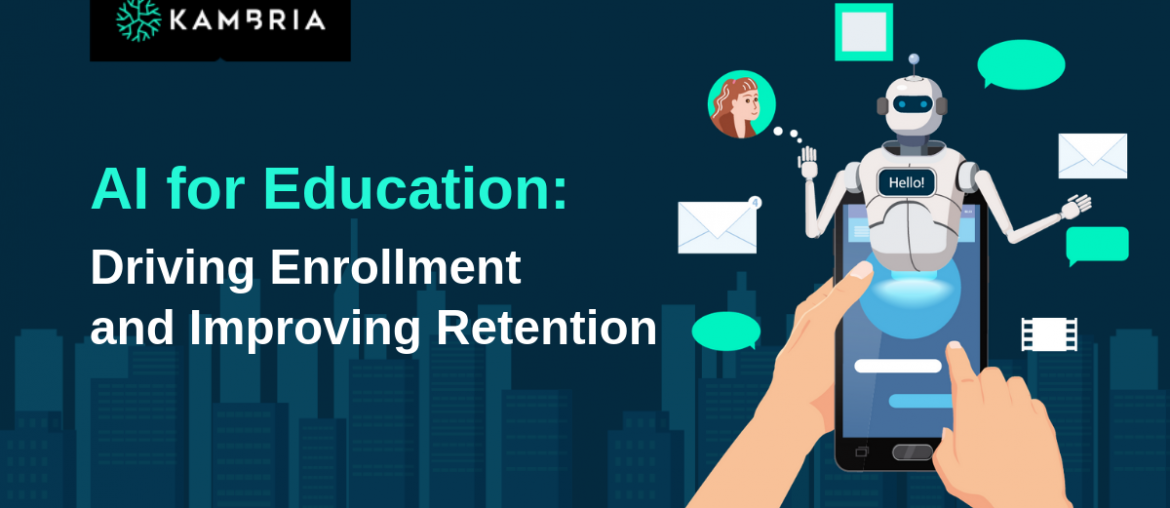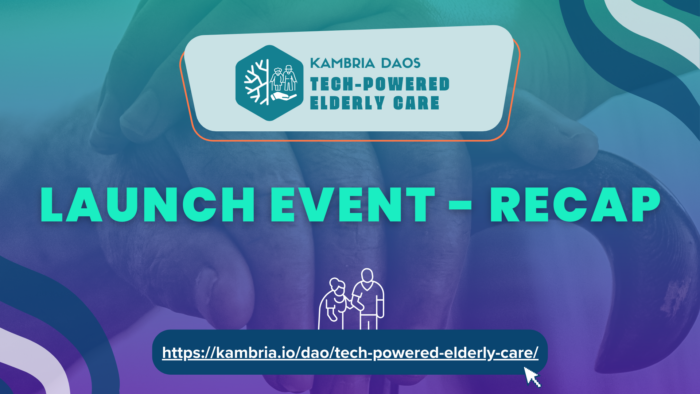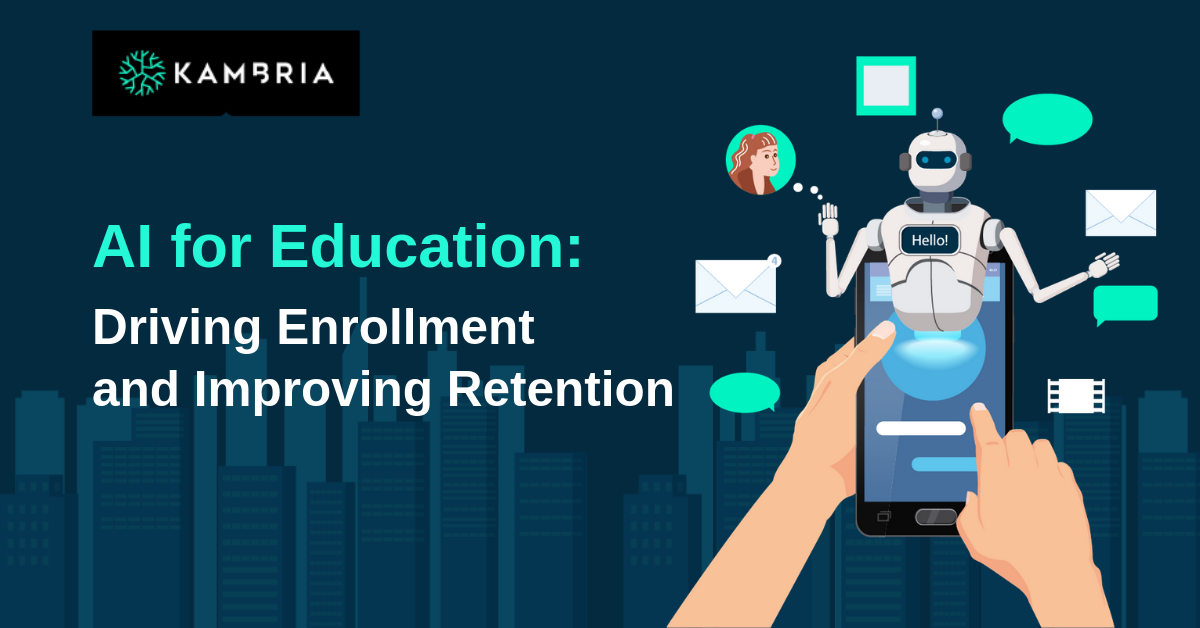
Year over year, fewer students are enrolling in college. Since 2011, the number of graduates and undergraduates entering degree-awarding institutions has decreased by 9%. “Colleges and universities in many regions continue to struggle from the combined effects of a strong job market and smaller numbers of high school graduates,” said Doug Shapiro, Executive Director of the National Student Clearinghouse Research Center.
At the same time, and perhaps due in part to lower enrollment, the importance of technology and artificial intelligence in the educational industry is growing. Students are becoming more digitally-savvy and each year, AI evolves enabling teachers and administrators to do more than ever before to maintain and grow program revenues. This article discusses the growing trend in AI for education and highlights key growth areas your organization can leverage to boost its bottom line and increase retention.
The AI in Education market size was estimated at over USD $400 million in 2017 and is anticipated to grow at a compound annual growth rate of more than 45% from 2018 to 2024. It is expected that artificial intelligence in U.S. education will grow by 47.5% from 2017-2021 according to the Artificial Intelligence Market in the US Education Sector report.
Below are key areas of growth for AI in education, including recruiting, admissions, remote learning, student success and retention.
Recruiting & Admissions
AI will lead to changes in educational best practices and alter the way teachers do their job.
One key area for change is student recruitment and admissions. By identifying and targeting the best applicants, your school will be able to operate more efficiently, enroll students more likely to graduate, and offer higher quality experiences. Using AI that can quickly answer questions received during the admissions cycle and deliver relevant materials will help prospective students improve the application experience.
Conversica provides AI virtual assistants to personalize the application process and drive enrollment. It can initiate contact, intelligently interpret replies, and respond with a tailored message. The Georgia State University admissions office uses virtual assistants to respond to more than 50,000 student messages, of which less than 1% required the direct attention of a staff member.
On the admissions side, AI can help predict which candidates are mostly like to enroll using algorithms that analyze GPAs, test scores and other metrics. Kira Talent’s admissions management software integrates machine learning to make higher education admissions “smarter” by identifying nine types of common human bias in university admissions, including groupthink and racial and gender biases. The purpose of the AI is to reduce bias. In 2018, Harvard University was sued for admissions bias by Asian-American students, highlighting the importance of reducing bias.
Once a suitable candidate has been identified, schools can automatically send admissions letters or emails without hours of a decision. These processes will improve both domestic and international student admissions to speed up visa processing, course registration, and student housing selection.
Seattle Pacific University (SPU), takes technology one step further by using telepresence robots for campus tours for overseas students. Students who are unable to visit the campus in person can remotely interact with professors, take a tour and attend class just like they are on-campus, giving students the feeling of community and belonging. Unlike video conferencing and live chat, telepresence robots put students in control and give them agency like nothing else. Once admitted, SPU students can use the robot to participate in breakout sessions and attend educational conferences.
Student Success & Retention
AI can help improve your bottom line by helping retain more students and ensure their success. Because schools are increasingly diverse, teachers are required to manage many types of learners, including students who are deaf or hard of hearing who require assistive technology, and language learners (and their parents) who may not speak or understand the language of the classroom well.
AI resources like Microsoft’s Translator for Education site offers tools and how-to guides for live captioning and translation in the classroom. “Microsoft Translator helps bridge these communication gaps, supporting accessible classroom learning with live captioning, cross-language understanding, and even multilingual casual conversations to help with student integration.”
Another Microsoft product, the Seeing AI app, assists special needs students by narrating the world around them. Designed for the low vision community, the app harnesses the power of AI to describe people, text and objects. For visually impaired students, having a scene in a classroom or playground independently described to them is a liberating experience increasingly possible with AI.
While AI will never replace human teachers, it can provide significant learning support. One common way teachers are using AI virtual assistance is through the use of chatbots for encouragement, reminders, and prompt assistance to help students stay on track. Both Colorado State University and California State University East Bay have implemented Cognii, a virtual learning assistant that can grade short essays and provide interactive, one-on-one tutoring using advanced artificial intelligence, natural language processing, and cognitive computing technologies. Georgia Tech uses artificial intelligence to answer questions from students registered for an online course offering them speedy, personalized support.
Remote Learning
Education has no limits; use AI to help eliminate potential boundaries and extend the reach of your programs. Today any course can be taught to anyone around the globe at any time with AI-powered inventions. Once such invention is a telepresence robot, which is emerging as an important tool for collaboration and connection in the classroom. Around the world, educators are using our robots to keep students engaged with experts and peers who cannot be physically be in the classroom.
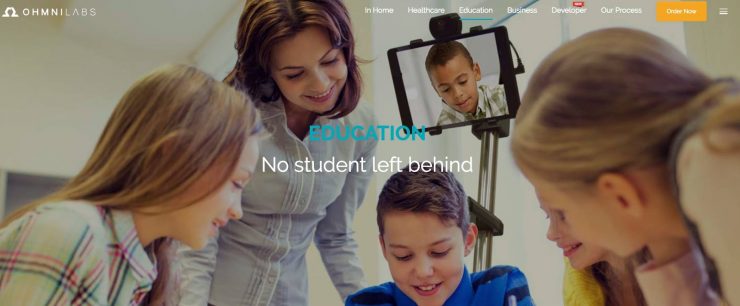
Telepresence robots are an excellent way to extend a teacher’s reach beyond the four walls of a classroom. At the STEM Academy of Lewisville, a private charter school in Lewisville, Texas, high school students communicate regularly with NASA engineers and astronauts. Using the Ohmni Telepresence Robot as a collaboration tool makes students feel like the expert is right there in the classroom. All a teacher has to do is send a link to her guest to grant immediate access to work alongside students; there is no application or special software to download so connecting is quick and seamless.
Conclusion
Since the students of today will need to work in a future where AI is the reality, it’s important that educational institutions expose students to and use the technology. Across the spectrum of higher education, we will see artificial intelligence emerge -- from educating the workforce to advancing the efficiency and quality of recruiting and teaching. AI is poised to be our new partner in education. Prepare for this partnership by closely following the field and including AI in discussions and planning for the future of your students, your departments and your university.
Open Call for Writers
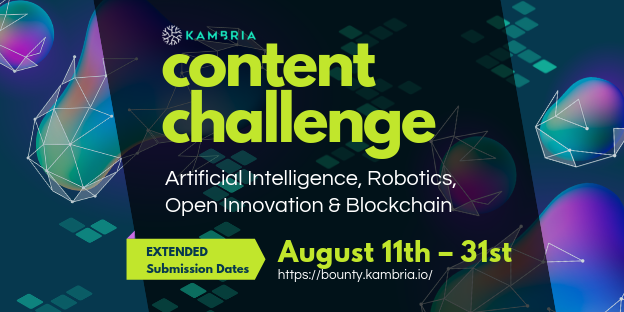
Do you like writing about tech topics like this one? Then join the Kambria Content Challenge and share your insight and expertise with our growing developer community. You could receive over $200 for the best submission. For complete details about our Content Challenge, click here.
